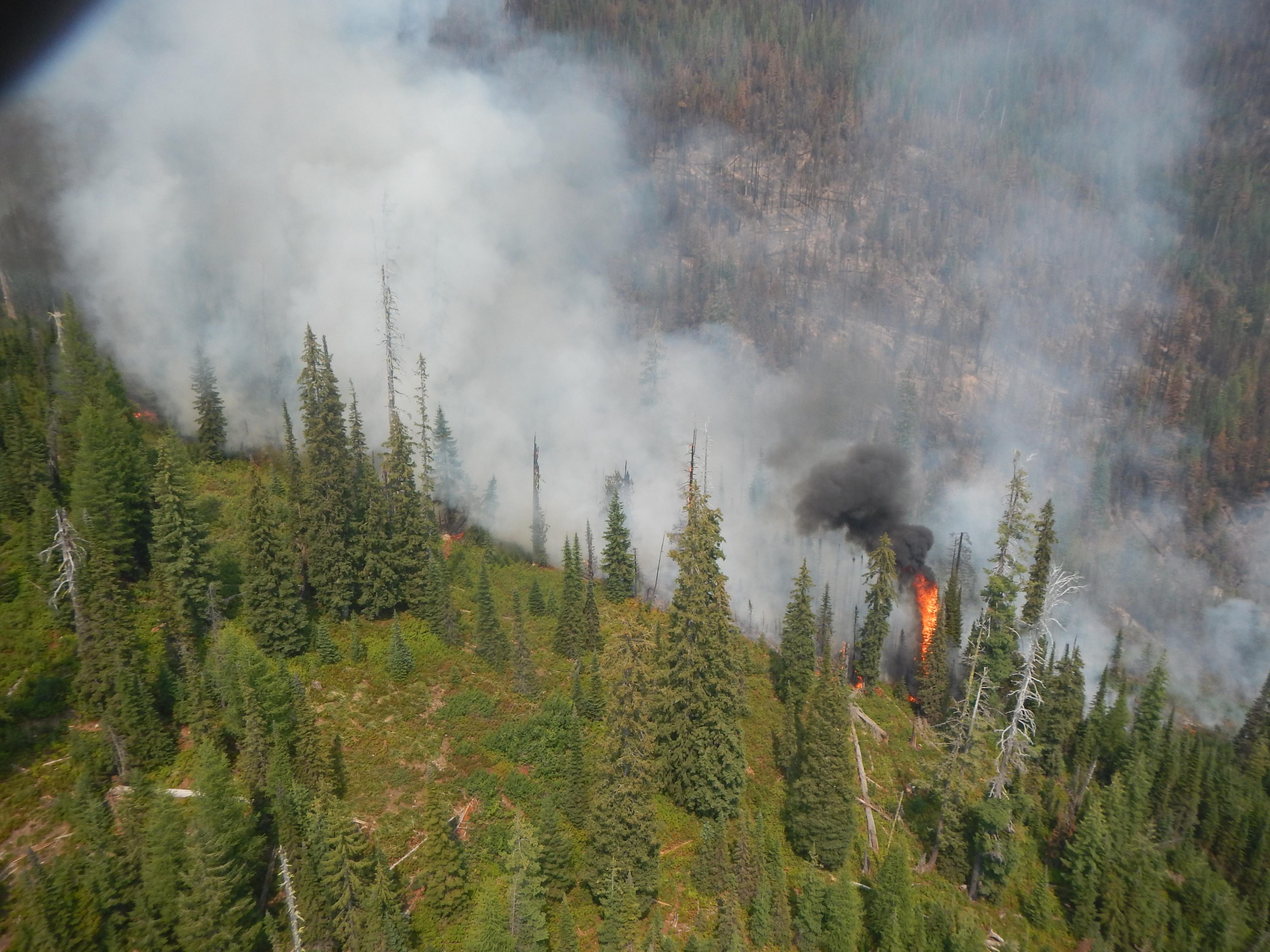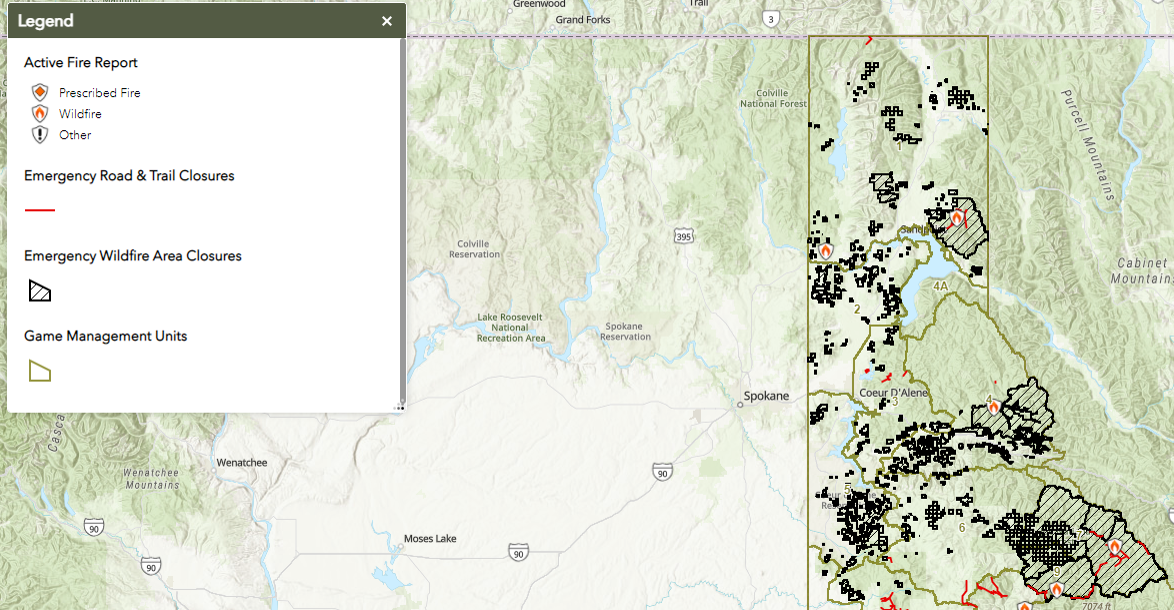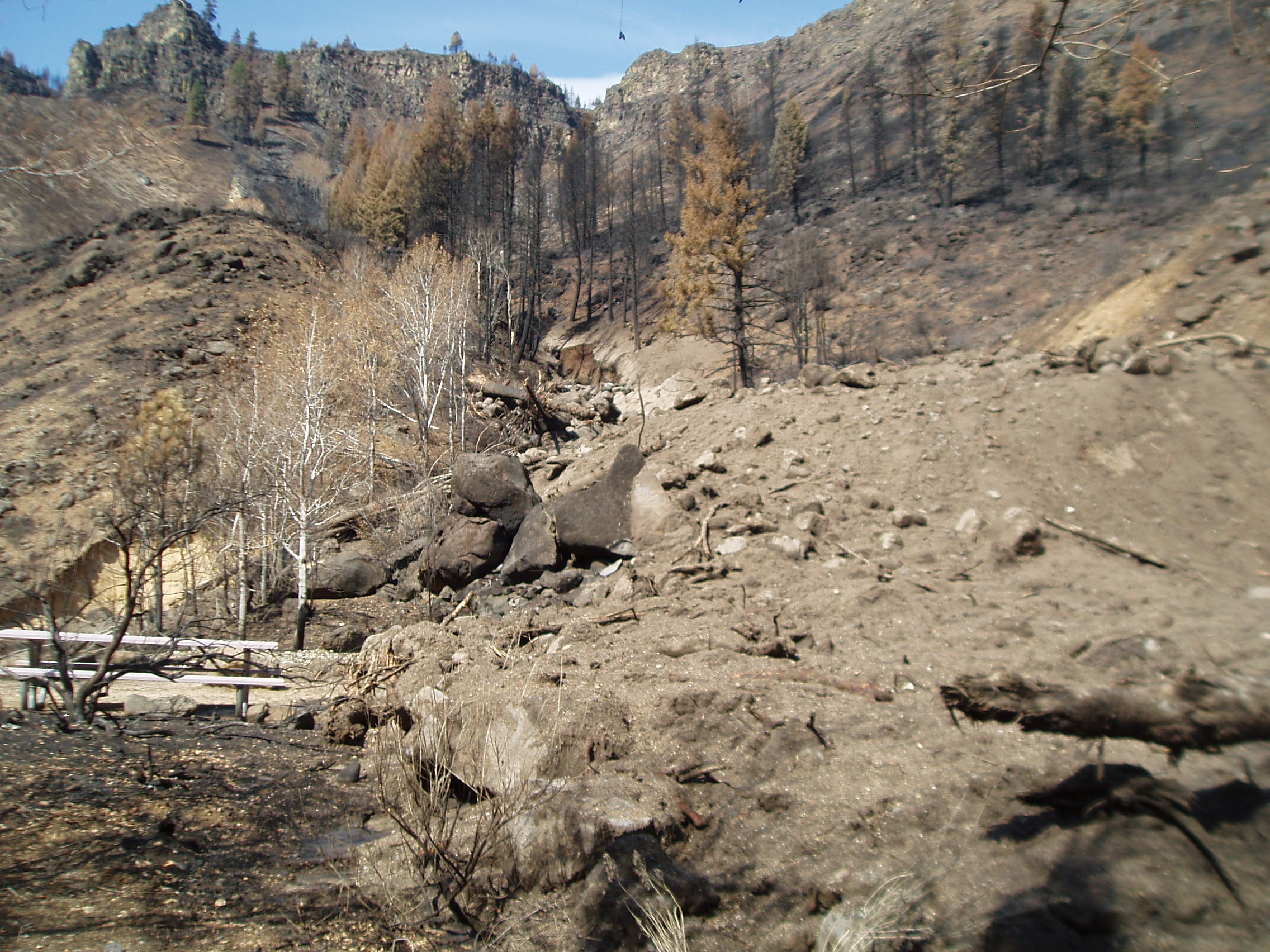Between the constant aroma of campfire and the smoke-filtered views of the sun, some days it feels like a scene from a post-apocalyptic movie. It has been a long, hard fire season in North Idaho and elsewhere throughout the state, and it’s not over yet.
“While fire activity has slowed down a bit, fuel conditions remain very dry, fire danger remains HIGH and there is still potential for large fire growth or new fires to emerge this fall,” said Patrick Lair, Public Affairs Officer for the Idaho Panhandle National Forests.

It’s not all bad, though. The recent rain and cool weather has resulted in the rescinding of fire restrictions in the Panhandle effective Aug. 27, which means hunters can sit around a fire when back at elk camp. That’s a drastic improvement over the Stage 2 fire restrictions that have been in place in North Idaho since July, and a step in the right direction toward the end of a long fire season.
The improving weather conditions have also resulted in significant reductions in wildfire area closures by the Forest Service throughout the Panhandle, and over half a million acres of PotlatchDeltic lands managed under the Large Tracts Program that have reopened to public use. For more on the reopening the some of the Large Tracts lands check out the recent Fish and Game press release.
As of Aug. 27, none of the Large Tracts lands managed by North Idaho Timber Group (Stimson, Molpus and Hancock) have been reopened to public access due to fire risks. Also, the Godde/Kroetch Access Program is closed until further notice. Please check the Panhandle Region website and Facebook page to receive updates on when those lands are open again.
To see the lands encompassed by the Large Tracts Program, visit our Idaho Hunt Planner.
All of Fish and Game’s wildlife management areas are open to the public for hunting and recreating.
What does all of this mean for hunters?
That’s the question on every hunter’s mind, and justifiably so. Sportsmen wait all year long for the opportunity to leave civilization behind and head for the mountains of Idaho to try and outsmart some of the state’s wariest game. All for the sake of meat and bragging rights at the next family reunion.
Fish and Game rarely alters hunts or offers rain checks for controlled hunt tags because of fires. That’s because fires typically affect only a portion of a hunting unit and are usually put out or controlled before the hunting season ends. Hunters affected by a fire closure can choose between adjusting their schedules to hunt later in the season, or exchange general tags to hunt in a different area. Exchanges must be made before the season begins.
Hunters with controlled hunt tags may also exchange them for general season tags before the controlled hunt begins, but controlled-hunt fees would not be refunded.
Where fire activity encompasses all or most of a big game unit or hunt area, Fish and Game may consider rain-checks.

Don’t panic just yet
According to Lair, “The National Forest is reducing our closures on all four of the large fire complexes in response to cooler, wetter weather, but it will take quite a bit of rain or snow before we can drop the closures altogether. Hunters probably won’t want to visit a recently burned area anyway, because there continues to be a lot of human activity and machinery operation related to fire suppression. Regardless, we know hunters are eager to get into the forest, and we are eager to allow them to do just that as soon it is safe.”
Fire managers say it typically takes around 2” of rain to turn the tides on active fires and closures. Although it is likely some of the early season hunting opportunities will be impacted by fire activity and closures, September and certainly October are often very wet months in North Idaho. September in the Panhandle brings an average of 1-2" of precipitation, followed by an additional 2-3” in October.
If those monthly averages come to fruition this year, it is likely much of the forest in the Panhandle will be open and accessible to hunters in time for the general any weapon opener on October 10. Only time will tell, but we will keep you updated as things progress.
Road, trail and wildfire closures
All big game units in the Panhandle have current emergency road or trail and wildlfire area closures in place.
Fish and Game strongly urges all hunters to check the Idaho Fire Map for the most up-to-date closure information. The map is updated multiple times each day to ensure sportsmen have access to the information they need to plan their hunts.

With regard to reductions in forest area and road closures, here are a few highpoints as of Aug. 27. Hunters may also wish to contact US Forest Service district offices in Avery, St. Maries, Fernan, Kellogg and Sandpoint for road and fire conditions.
- Trestle Creek complex fire
- Hunters can access the north side of the Cabinet Mountains from the Callahan Creek drainage in Montana
- Lightning Creek road up to Wellington Creek is open on the south side.
- Character complex fire
- The portion of Dobson/Kings Pass Road between Murray and Wallace is closed
- Unit 7 and 9 fires
- Expecting approximately 75% reduction in size of closures
- Unit 9 hunters are encouraged to contact the Avery Forest Service office at (208) 245-4517 for updates
- St. Joe River Road is closed from mile marker 62 to 74 until further notice
- Access to upper Unit 7 is open from Gold Summit
- Nugget Creek campground is closed until further notice
Fish and Game has a few recommendations for hunters before leaving for the mountains this fall
- Check the Fish and Game Idaho Fire Map to ensure the area you want to hunt isn’t closed or on fire. This map is your single most valuable resource for researching closures.
- Leave your house with 2-3 hunting areas in mind in case you need to unexpectedly alter your plans.
- If your preferred hunting areas are inaccessible, take advantage of the opportunity to explore new areas or consider postponing your hunt to a later date if that’s an option.
- Try to avoid hunting fresh burns. They will likely have a lot of people, machines and activity, decreasing the chances that game is still in the area.
- Please pay attention and adhere to all fire-related signage at all times.
- Expect to encounter downed trees on roads and trails. Bring a chain or tow rope and a chainsaw to help you get where you want to go.
- Watch for smoke from smoldering fires and stay away from those areas.
- If camping and having a campfire, make sure the fire is completely out when you leave.

Follow us on the Panhandle Region Facebook page for regular updates and news.
For questions or addition information call the Panhandle Regional office at (208) 769-1414.
Take advantage of Fish and Game resources to plan your next hunt:
Here are some helpful resources from Idaho Panhandle National Forests:
- Wildfire information
- Temporary Closures
- Air quality
- IPNF Fire Information Hotline: (208) 557-8813

